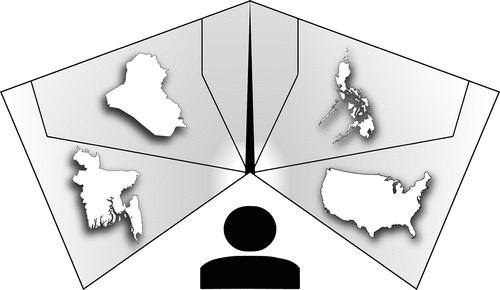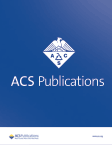Reflections in Chemical Safety and Research: Doing Science Against All Odds in the Philippines
IF 3.4
Q2 PUBLIC, ENVIRONMENTAL & OCCUPATIONAL HEALTH
引用次数: 0
Abstract
Imagine yourself as an idealistic recent university graduate, who has been recruited by the Institute of Chemistry University of the Philippines-Diliman for tenure track with a relatively decent repatriation package. You start dreaming about starting your own laboratory and doing novel research work that has never been done before in your home country. You feel really good about yourself, thinking that you will be contributing to national development by mentoring the cream of the crop, leading researchers in advancing science and technology in the country. And then you start working in the laboratory. For the first part of your work, you need nitric acid, a regulated chemical. You realize that it takes a ton of paperwork to procure and at least a week to acquire. Your timeline is still doable, so you feel this is just a minor setback. Then the next phase requires equipment purchasing, and this is when reality hits you, because by then you realize that it takes years to actually procure this piece. Research in the Philippines in general, and particularly in the University of Philippines (UP), is quite challenging─to put it mildly. We do not worry about the science and the problem solving, nor about funding, which is a concern for every researcher around the globe. I wish that looking for the next meal ticket were our focus, because we researchers are trained to solve problems and write proposals to secure funding. But our problem is something else entirely. Ingrained regulations─or perhaps restrictions is the better word─appear, from funding utilization to procurement to safety. Many of these rules seem designed to impede researchers from performing their tasks efficiently. Is our lack of a research culture preventing us from striking the necessary balance between regulatory compliance and functional efficiency? Is our insufficient research experience compared to other countries cause for regulations or policies that may affect research? Is our interpretation of the law keeping us from moving forward at a pace that is on par with the rest of the world? Research and innovation are established key factors in attaining sustainable national development. Clearly, an enabling, nurturing environment conducive to work is essential. We all agree that research funding require due diligence, especially government-provided funds from citizens’ tax payments. We are painfully aware that as a developing country, we need to be very conscientious about how we use money for research. The laser, hood, safety shower, and vacuum line in my laboratory could have been housing and food for our fellow Filipinos. But how would our nation benefit if the science community could not use funds at all? How would our nation gain ground in research when young researchers are demoralized because of delayed salaries due to a regulation in transferring and receiving research funds. Are not the Commission on Audit Circular No. 94-013 and related regulations meant to expedite this process? Shouldn’t we disburse allocated funds for their well-deserved purpose? What good is a Gantt chart when we set aside the first two quarters of the year for possible delays in procurement? Did we ask researchers in other parts of the globe on how long they need to wait to acquire needed equipment and supplies? My experience as a graduate student abroad showed it takes only a day to buy optical components. Compare this model to the three-month time frame to buy the same components in the Philippines. Can’t we do better? The Handbook on Philippine Government Procurement sits on my nightstand at home. The Handbook includes the revised implementation rules and regulations of the Republic Act 9184, which provides for the modernization, standardization, and regulation of government procurement activities and other purposes. It clearly allows for procuring needed research equipment from outside the country, as well as proprietary technologies from abroad through direct negotiation. Given the current situation of science and technology in the country, we need to procure most of our research equipment and supplies beyond our shores. Undoubtedly, Republic Act 9184 allows us to get the best deal in every purchase. So why do we get our equipment from a third-party supplier at three times the price? More often than not, we even get the subpar brand of equipment, which scientists worry about having in their laboratories because of its maintenance expense. Is this an appropriate use of funds? Securing overpriced, subpar equipment becomes even more alarming when it comes to safety equipment and supplies. Imagine a laminar hood that does not work up to its advertised specifications, or a safety shower that took years to arrive because of failed bidding, only to malfunction after six months. Safety is safety wherever the location in the world. A common misconception is because a developing country continuously faces difficult and challenging conditions, it is indestructible. Not so. The moment students or colleagues get involved in a laboratory accident, what matters is not that the incident occurred wherever it did but that a human life experienced pain or death. It is a problem that shatters boundaries, geographical or otherwise. Safety is not only the problem of a developed country with lots of money to spend on safety measures. It is even more critical in an economically challenged situation, where one cannot afford huge hospital bills, environmental ruin, and other worst-case scenarios. The approach in poorer regions such as the Philippines must be preventive, which means personnel must take extra care in safety planning before doing actual experiments and other laboratory activities, including procurement of safety equipment and materials that actually will work for years. Risk assessment is evidently essential for developing greener and safer approaches. Chemical safety education and training are crucial so that students and researchers are aware of the dangers of working in the laboratory. Discussing experimental plans and possible safety concerns with a student can save lives. This practice is a more affordable way to manage safety and create a safety culture in the workplace. I see the value of chemical safety and security regulations, such as Republic Act No. 9165, known as the Comprehensive Dangerous Drug Act, Republic Act No. 9516 for Implementing Rules and Regulations on Controlled Chemicals, and Republic Act 6969. These regulations seek to control toxic substances and hazardous and nuclear wastes. They exist for noble reasons: to protect the health, safety, and security of people. However, these regulations become hindrances to research when it takes more than a month for researchers to obtain nitric acid because the institution has exceeded its allotted amount, when one cannot dispose of a certain waste chemical because it is not classified, and when one can order acetone only a milliliter at a time. These roadblocks create an environment that is no longer conducive to discoveries and innovation. Such logistical burdens imply that researchers should just close shop. We might as well say that we don’t want research and technological advances in our country. Indeed, the path is arduous. We can only hope that perhaps this time, the new university administration will listen to scientists’ dilemma and will read our thick “manifesto” on research management and procurement, complete with data and proof of our experiences. Regulators did promise to meet with us. The students, however, are very bright and some are even gifted. They inspire us as faculty members to sustain the uphill climb towards a safe and productive research culture. We cannot help but to keep going, bearing in mind that the Philippines is our country (Figure 1). This is our future and our problem to solve. Figure 1. Mirror of reflections in chemical safety and research. Imee Su Martinez is a Professor at the Institute of Chemistry, University of the Philippines-Diliman. Her research interest is surface chemistry focusing on the characterization of molecules at interfaces using surface-specific nonlinear optical techniques and other classical surface techniques. She is the principal investigator of the Surface Science and Spectroscopy Laser Laboratory (S3LLAB), where the very first Second Harmonic Generation Microscope (SHG) in the country was built. She also started the Chemical Safety and Security course for graduate students at the institute. The course focuses on the ethical practice of chemistry. She is currently serving as the Vice Chairperson of the Organization for the Prohibition of Chemical Weapons Scientific Advisory Board (OPCW SAB). This article has not yet been cited by other publications. Figure 1. Mirror of reflections in chemical safety and research.

化学品安全与研究的思考:在菲律宾不畏艰险开展科学研究
想象一下,你是一名充满理想的应届大学毕业生,被菲律宾大学-迪利曼化学研究所聘为终身教职员工,并享受相对优厚的回国待遇。你开始梦想建立自己的实验室,从事国内从未有过的新颖研究工作。你自我感觉非常良好,认为自己将为国家发展做出贡献,指导顶尖研究人员推动国家科技进步。然后,你开始在实验室工作。在工作的第一部分,你需要硝酸,一种受管制的化学品。你意识到这需要大量的文书工作和至少一周的时间来采购。但您的时间安排仍然可行,所以您觉得这只是一个小挫折。下一阶段需要购买设备,这时你才意识到现实的残酷,因为此时你已经意识到,要真正买到这些设备需要好几年的时间。在菲律宾,特别是在菲律宾大学(UP)开展研究工作,可以说是相当具有挑战性。我们既不担心科学和问题的解决,也不担心资金,而资金是全球每位研究人员都关心的问题。我希望我们的工作重点是寻找下一张饭票,因为我们研究人员接受的培训就是解决问题和撰写提案以获得资金。但我们的问题完全不同。从资金使用到采购,再到安全,都出现了根深蒂固的规定--或许用 "限制 "这个词更合适。其中许多规定似乎都是为了阻碍研究人员高效完成任务而设计的。我们缺乏研究文化,是否妨碍了我们在遵守法规和提高职能效率之间取得必要的平衡?与其他国家相比,我们的研究经验不足,这是否是制定可能影响研究的法规或政策的原因?我们对法律的解释是否使我们无法与世界其他国家同步前进?研究与创新是实现国家可持续发展的既定关键因素。显然,一个有利于工作的有利环境至关重要。我们都同意,科研经费需要尽职尽责,尤其是政府从公民纳税中提供的资金。我们痛苦地意识到,作为一个发展中国家,我们需要非常认真地对待科研经费的使用。我实验室里的激光器、抽油烟机、安全淋浴和真空管道本可以为菲律宾同胞提供住房和食物。但是,如果科学界根本无法使用资金,我们的国家将如何受益?如果年轻的研究人员因为转拨和接收研究资金的规定而导致工资拖欠,从而士气低落,那么我们的国家又如何在研究领域取得进展呢?难道审计委员会第 94-013 号通知及相关规定不是为了加快这一进程吗?难道我们不应该将拨付的资金用于其应有的用途吗?如果我们把每年的前两个季度留给可能出现延误的采购,甘特图又有什么用呢?我们是否询问过全球其他地区的研究人员,他们需要等待多久才能获得所需的设备和用品?我在国外读研究生时的经验表明,购买光学元件只需要一天时间。相比之下,在菲律宾购买同样的元件需要三个月的时间。难道我们不能做得更好吗?菲律宾政府采购手册》就放在我家里的床头柜上。该手册包括第 9184 号共和国法案的修订实施细则和条例,该法案规定了政府采购活动的现代化、标准化和监管及其他目的。该法明确允许从国外采购所需的研究设备,也允许通过直接谈判从国外采购专有技术。鉴于我国目前的科技状况,我们需要从国外采购大部分研究设备和用品。毫无疑问,《第 9184 号共和国法案》让我们在每次采购中都能获得最优惠的价格。那么,为什么我们要以三倍的价格从第三方供应商那里购买设备呢?很多时候,我们甚至会买到劣质品牌的设备,科学家们担心在实验室中使用这些设备会因维护费用而受到影响。这样使用资金合适吗?当涉及到安全设备和用品时,购买价格过高的劣质设备就更加令人担忧了。试想一下,层流罩的工作性能达不到广告宣传的规格,或者安全淋浴器因招标失败而多年才到货,但半年后就出现故障。无论在世界任何地方,安全就是安全。一个常见的误解是,发展中国家一直面临困难和挑战,因此坚不可摧。 并非如此。当学生或同事卷入实验室事故的那一刻,重要的不是事故发生在哪里,而是一个人的生命经历了痛苦或死亡。这是一个打破地域或其他界限的问题。安全问题不仅是资金雄厚的发达国家的问题。在经济困难的情况下,它甚至更为重要,因为人们无法承担巨额的医院账单、环境破坏和其他最坏的情况。在菲律宾这样的贫困地区,必须采取预防性措施,这意味着工作人员在进行实际实验和其他实验室活动之前,必须格外注意安全规划,包括采购能实际使用多年的安全设备和材料。风险评估对于开发更环保、更安全的方法显然至关重要。化学安全教育和培训对学生和研究人员了解实验室工作的危险性至关重要。与学生讨论实验计划和可能存在的安全问题可以挽救生命。这种做法是在工作场所进行安全管理和创建安全文化的一种更经济实惠的方式。我看到了化学品安全和安保法规的价值,如第 9165 号共和国法(又称《综合危险药品法》)、第 9516 号共和国法(《受控化学品实施细则和法规》)和第 6969 号共和国法。这些法规旨在控制有毒物质、危险废物和核废料。它们存在的崇高理由是:保护人民的健康、安全和保障。然而,当研究人员因机构超出分配数量而需要一个多月才能获得硝酸时,当人们因某种废弃化学品未分类而无法对其进行处置时,当人们每次只能订购一毫升丙酮时,这些法规就成了研究的障碍。这些障碍造成的环境不再有利于发现和创新。这些后勤负担意味着研究人员应该关门大吉。我们不妨说,我们不希望在我们的国家进行研究和技术进步。的确,道路是艰辛的。我们只能希望,也许这一次,新的大学管理部门会倾听科学家们的困境,会阅读我们厚厚的关于科研管理和采购的 "宣言",并附上我们的数据和经验证明。管理者确实答应与我们会面。然而,学生们非常聪明,有些甚至很有天赋。他们激励着我们教职员工坚持不懈地攀登,努力营造一种安全、富有成效的科研文化。考虑到菲律宾是我们的国家(图 1),我们不能不继续前进。这是我们的未来,也是我们要解决的问题。图 1.化学安全与研究的反思之镜。伊米-苏-马丁内斯(Imee Su Martinez)是菲律宾大学(University of the Philippines-Diliman)化学研究所的教授。她的研究兴趣是表面化学,重点是利用表面特异性非线性光学技术和其他经典表面技术表征界面上的分子。她是表面科学与光谱激光实验室(S3LLAB)的首席研究员,国内第一台二次谐波发生显微镜(SHG)就是在这里建成的。她还在研究所为研究生开设了化学安全和安保课程。该课程的重点是化学伦理实践。她目前担任禁止化学武器组织科学顾问委员会(OPCW SAB)副主席。本文尚未被其他出版物引用。图 1.化学安全与研究中的反思之镜。
本文章由计算机程序翻译,如有差异,请以英文原文为准。
求助全文
约1分钟内获得全文
求助全文
来源期刊

ACS Chemical Health & Safety
PUBLIC, ENVIRONMENTAL & OCCUPATIONAL HEALTH-
CiteScore
3.10
自引率
20.00%
发文量
63
期刊介绍:
The Journal of Chemical Health and Safety focuses on news, information, and ideas relating to issues and advances in chemical health and safety. The Journal of Chemical Health and Safety covers up-to-the minute, in-depth views of safety issues ranging from OSHA and EPA regulations to the safe handling of hazardous waste, from the latest innovations in effective chemical hygiene practices to the courts'' most recent rulings on safety-related lawsuits. The Journal of Chemical Health and Safety presents real-world information that health, safety and environmental professionals and others responsible for the safety of their workplaces can put to use right away, identifying potential and developing safety concerns before they do real harm.
 求助内容:
求助内容: 应助结果提醒方式:
应助结果提醒方式:


